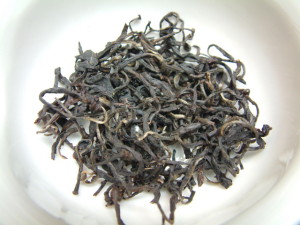Are you a lover of Darjeeling tea? Or perhaps just curious about the region? Unfortunately, it appears that the struggle for recognition by the Ghorkha has led to the harvest of a tiny fraction of the expected tea crop in Darjeeling. In fact, indications are that Darjeeling tea on auction in Kolkata is way way down and trending toward zero with upcoming auctions. The relatively short, yet ultimately complex history of the region set the stage for a months long uprising triggered by a ruling about language taught in schools.

Darjeeling is in the Northeast of India surrounded by Nepal, Bhutan, and Bangladesh (Public Domain)
The Ghorkha and Ghorkhaland Region
If you haven’t taken a close look at a map of India and West Bengal recently, now is a great time to do so. West Bengal is an oddly shaped state in Eastern India. Almost serpent like in shape, West Bengal extends from the Bay of Bengal in the south up to the high mountains between Nepal and Bhutan. It then extends east, sandwiched between Bhutan and Bangladesh. India extends further to the east into Assam where the country opens up, yet Darjeeling itself is seemingly squished from all sides with a greater geographic touch to neighboring countries than to India.
Important Darjeeling Facts:
- Darjeeling, once part of Nepal, was ceded to the British and East India Company in 1815 in the Treaty of Sugauli.
- Modern India was created in 1947 when it became independent from Great Britain. It’s only 70 years old!
- Bengal was separated along religious lines into West Bengal (India) and East Bengal (Pakistan) during Indian independence.
- Bangladesh, formerly East Bengal, succeeded from Pakistan in 1971.
The Ghorkha are Indian citizens of Nepali descent. They speak a different language and have different customs from those to the south, the majority Bengali Indian population. They have been advocating since 1907 – 40 years before India’s independence – for recognition and their own independent state. The desire for more autonomy, and recognition as different from Bengali’s of the south, has contributed to significant friction that has occasionally spilled over to violence since that time. This desire for its own state led to the creation of the push for Ghorkhaland to include the northern most portions of West Bengal – a region from Darjeeling east to the border with Assam.
Within the Gorkhaland region you will find that the population actually includes Nepali (which is actually 15 different ethnic groups), Lepcha (some of the earliest settlers), Bhutia (people migrating from Bhutan, Sikkim and Tibet), Tibetan (refugees from Tibet during the Sino-Indian War of 1961), Bengali (settlers and migrants from South Bengal and refugees from Bangladesh), and many others not otherwise classified1.
During the past 100+ year desire for recognition and its own state, the Gorkha have come together and formed various political parties and violence has flared from time to time, notably in the 1980’s and again in 2013. This has led to various concessions from West Bengal with the current major political party, the Gorkha Janmukti Morcha (GJM) advocating for recognition and the Gorkha Territorial Administration, providing semi-autonomous self-governing in the region.
The Spark for 2017 Turmoil
In May 2017, the West Bengal government of Chief Minister Mamta Banerjee issued a ruling that Bengali must be taught in all schools in West Bengal through the 10th grade. In a region that has struggled for over 100 years for recognition, in an area more closely aligned to Nepal than to Bengal, this was the spark needed to revive the push for an independent Gorkhaland state.
Immediately after the announcement from the West Bengal government the GJM and other related parties renewed the long simmering push for an independent state with Darjeeling as the epicenter for protests. On June 12th, the GJM called for an indefinite bandh – a Hindi word for general strike – while at the same time a group of 26 trade unions lent support by calling for a strike by tea workers as well. Many people in the region took to the street to protest causing disruptions in local government services and transportation, making it difficult for tourists and residents of boarding schools of the region to leave. In response, the West Bengal government sent in police and military to try and quell the unrest. To date at least three people have died and multiple buildings and vehicles have been burned.
As August 2017 approaches the region continues to protest with tea production and tourism, two of the largest industries of Darjeeling and the greater Gorkhaland area, mostly at a standstill. The GJM has refused talks with the West Bengal Government, instead pushing for talks at a national level to push for the creation of their state. And, if the West Bengal Government is to be believed the GJM may now be bringing in outside help to train protesters for a long drawn out struggle2.
Summing Up
The season for 2nd Flush Darjeeling is now past, the ruling Bharatiya Janata Party (BJP) of Narendra Modi thus far has not engaged in the discussion for a Gorkhaland state, and the GJM remains unwilling to work with the West Bengal Government. So the 2017 Darjeeling crop is a bust and early indications aren’t looking good for a resolution anytime soon potentially threatening the 2018 Darjeeling crop as well.
1) GTA Profile, Gorkhaland Territorial Administration, http://www.gta-darjeeling.org/node/285
2) GJM Preparing for Underground Armed Movement with Maoists, CNN News 18, http://www.news18.com/news/india/gjm-preparing-for-underground-armed-movement-with-maoists-1470011.html







